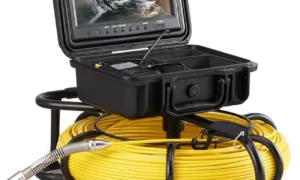Are you interested in starting an online business, but not sure where to start? This step-by-step guide will walk you through the process of starting a profitable online business, from finding a niche market to launching your own eCommerce website says Vic Di Criscio.
By the end of this guide, you’ll have everything you need to get started selling products or services online.
1) Find a Profitable Niche
The first step to starting an online business is finding a profitable niche. A “niche” is a market segment that you can target with your products or services. When choosing a niche, it’s important to consider the following factors:
- The demand for products or services in the niche
- The competition in the niche
- The profitability of the niche
To find a profitable niche, you can use Google’s Keyword Planner tool. This tool allows you to research keywords that people are searching for online. Based on the results, you can choose a niche with high demand and low competition.
2) Choose a Business Model
Once you’ve chosen a niche, it’s time to decide on a business model. There are several different business models that you can use to start an online business. The most common include:
- E-commerce: Selling products or services online
- Affiliate marketing: Promoting products or services for commission
- Drop shipping: Selling products without holding inventory
- Service-based: Offering services like web design or copywriting
3) Create a Website
Now that you’ve chosen a business model, it’s time to create a website. Your website will be the foundation of your online business. It’s where you’ll sell your products or services, and it’s also where potential customers will find information about your business.
If you’re not sure how to create a website, don’t worry – there are plenty of tools and resources that can help. For example, WordPress is a popular platform that allows you to easily create a website without any coding knowledge.
4) Choose a Domain Name
Your domain name is your website’s address on the internet. It’s what people will type into their browser to find your site. When choosing a domain name, you should:
Choose a .com domain
Make it short and easy to remember
Include keywords relevant to your business
5) Set up Hosting
Once you’ve chosen a domain name, you need to set up hosting. Hosting is like renting space on a server for your website. Without hosting, your website won’t be accessible on the internet explains Vic Di Criscio. There are many different hosting providers to choose from, but we recommend starting with Blue host.
6) Install WordPress
Now that you have hosting set up, it’s time to install WordPress. WordPress is a content management system (CMS) that allows you to easily create and manage your website’s content. With WordPress, you can add new pages, posts, and media to your website with just a few clicks.
7) Choose a WordPress Theme
Now that WordPress is installed on your site, it’s time to choose a theme. A WordPress theme controls the design and layout of your website. There are thousands of themes to choose from, so finding the right one for your business can be a challenge. We recommend using a theme from Theme forest.
8) Install Plugins
In addition to themes, there are also plugins available for WordPress says Vic Di Criscio. Plugins are like mini-programs that add additional features or functionality to your website. For example, there are plugins that can add a contact form to your site or help you create an online store.
9) Create Your Content
Now that your website is set up, it’s time to start creating content. Content is the bread and butter of your website – it’s what will attract visitors and keep them coming back for more. When creating content, be sure to:
Make it helpful and informative
Include relevant keywords
Update it regularly
10) Promote Your Website
Once you have some content on your site, it’s time to start promoting it. There are many different ways to promote your website, but some of the most effective include:
Search engine optimization (SEO): This is the process of optimizing your website to rank higher in search engine results pages (SERPs).
Social media: This involves promoting your website on social media platforms like Facebook, Twitter, and Instagram.
Paid advertising: This includes using paid ad platforms like Google AdWords or Bing Ads to promote your website.
Conclusion:
Now that you’ve read this guide, you should have a good understanding of how to start an online business. Remember, there are many different business models to choose from, so be sure to pick one that’s right for you. Once you have your business model in place, it’s time to create a website and start promoting your business.



































